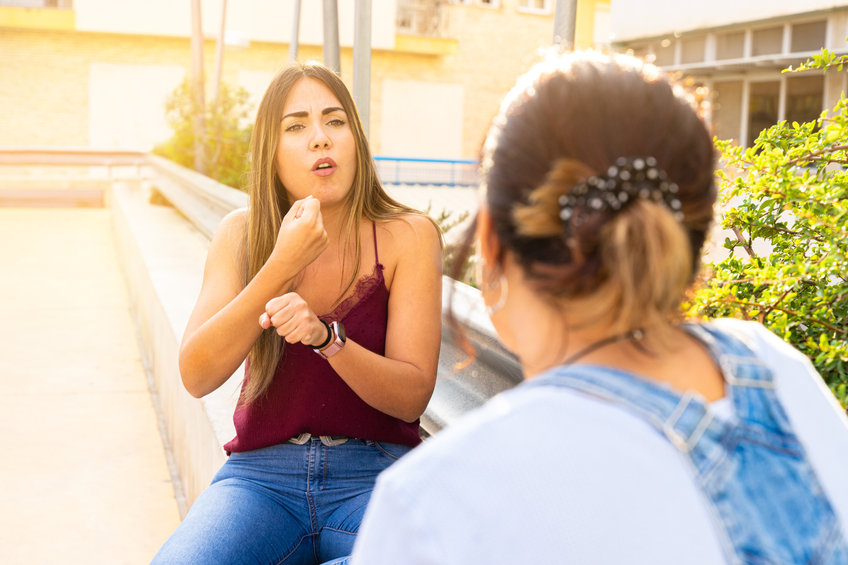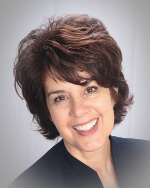|
www.HealthyHearing.com |
Why you should learn sign languageASL is the fifth-most used language in the US
Contributed by Debbie Clason, staff writer, Healthy Hearing Not only is learning a second language good for your brain, it’s also a great way to expand your communication skills. This is especially true for American sign language, which is the fifth most-used language in the U.S. What is sign language?
common languages used in the U.S. Juan Pablo de Bonet is credited with publishing the first sign language instructional book for the deaf in 1620. The book was based on the work of Girolamo Cardano, an Italian physician, who believed that it wasn’t necessary to hear words in order to understand ideas. To clarify, there is a big difference between ASL as a language versus signed English. Those who speak ASL fluently use their eyes, hands, face and body. The vocabulary and grammar of ASL is also different from English. As a result, learning to speak ASL as a language will be more demanding than just learning to communicate with signs and fingerspelling. Who uses sign language?Some experts argue early man likely used signs to communicate long before spoken language was created. And while we’ve all come a long way since then, whether you’ve pressed your index finger against your lips to hush a noisy child, raised your hand to hail a cab, or pointed to an item on the menu, you’ve used sign language in its simplest form. Anywhere from 500,000 to two million speak American Sign Language (ASL) in the United States alone. It’s the fifth most-used language in the United States behind Spanish, Italian, German and French. While that ranking varies depending on the source, it should definitely be considered as one of your options if you’re looking to learn a second language. Related: Being Deaf gives this clinical audiologist a unique perspective The Deaf dommunityAmerican Sign Language is the primary language of many North Americans who are deaf or hard of hearing and identify as part of the Deaf community. Not only is ASL different from signed English, it is also as different from its European counterpart as English is to French. Much like those with normal hearing can detect accents from different parts of the country, those who speak ASL can also detect geographical dialects and slang. ParentsAs many as 90 percent of deaf children are born to hearing parents, which can make learning sign language a family affair. Parents who learn ASL along with their child often find it easier to communicate on a deeper level with their deaf child. Studies also indicate when a child who is deaf or hard of hearing learns ASL, their ability to learn their native language improves. The same is true of learning to lipread. Some parents of normal hearing children teach their infants signed English. Advocates believe babies can learn to communicate their needs – such as being hungry or thirsty – through the use of signs before they are able to speak. Scientists believe children who learn a second language when they are very young develop better language skills. Due to its visual nature, sign language is a great tool for early readers and enhances spelling skills. ProfessionalsIf you’re employed, learning ASL may enhance your career and give added benefit to the workplace.
AthletesBaseball aficionados may be interested in learning that the signals baseball players use to communicate with each other are the result of a deaf baseball player by the name of William “Dummy” Hoy who played for the Chicago White Sox in the early 1900s. Since umpires shouted all the calls at that time, Dummy and his third-base coach worked out a series of signals to communicate balls and strikes. The practice caught fire and soon became common use among players, managers and umpires. Today, most every major sport uses some type of sign language between coach and player. Not only does it keep the other team guessing, it also provides a great way to communicate strategy when fans are making it difficult to hear. Why you should learn sign languageIt’s growing in popularity.Since the passage of the Americans with Disabilities Act, ASL has become one of the most popular language classes in colleges and universities. These top universities for Deaf students excel at providing services and meeting the specific needs of the Deaf community. Learning a second language is good for your brain health.Swedish scientists discovered that learning a foreign language can actually increase the size of your brain. Scientists also know that people who speak more than one language fluently have better memories and can delay the onset of dementia and Alzheimer’s disease. The rewards are immeasurable.When someone you love can’t hear, ASL is a great way to communicate in a rich, meaningful way. It’s also the best way to develop awareness and sensitivity to the Deaf culture, a community of non-hearing individuals which number more than one million in the United States alone. Whether you teach your baby to sign or learn ASL to communicate with a deaf friend or family member, you are using a full-bodied form of communication that will enhance your relationship as it improves your mind and spirit. Ready to get started? Check out some of our favorite smartphone ASL apps. More on ASL and Deaf culture:Debbie Clason, staff writer, Healthy Hearing
Related Help Pages:
Hearing loss Children's hearing loss
|
Featured clinics near me
Hearing Health Solutions from Ohio ENT - Columbus
974 Bethel Rd Ste B
Columbus, OH 43214
Earzlink Hearing Care - Reynoldsburg
7668 Slate Ridge Blvd
Reynoldsburg, OH 43068

Find a clinic
Need a hearing test but not sure which clinic to choose?
Call 1-877-872-7165 for help setting up a hearing test appointment.


 Debbie Clason holds a master's degree from Indiana University. Her impressive client list includes financial institutions, real estate developers, physicians, pharmacists and nonprofit organizations.
Debbie Clason holds a master's degree from Indiana University. Her impressive client list includes financial institutions, real estate developers, physicians, pharmacists and nonprofit organizations.